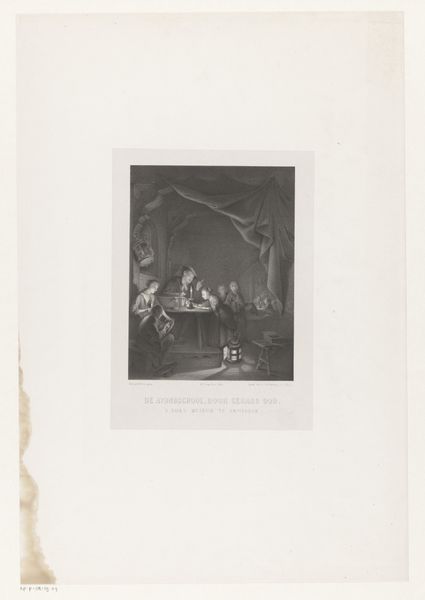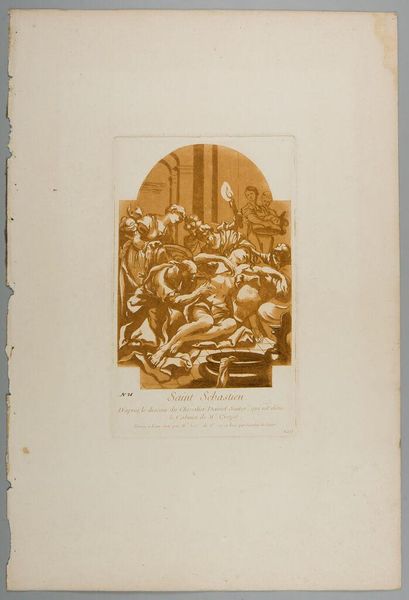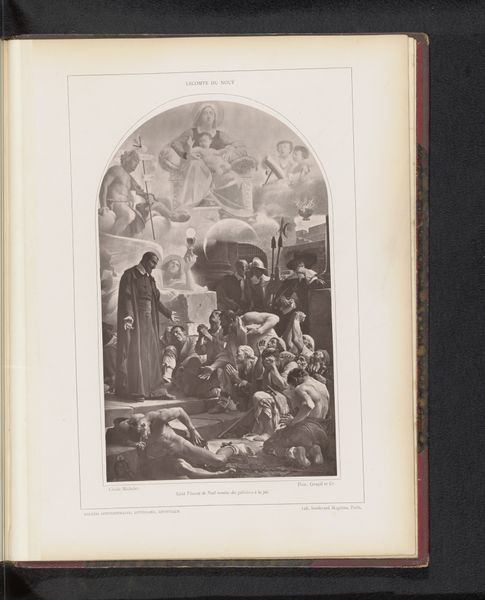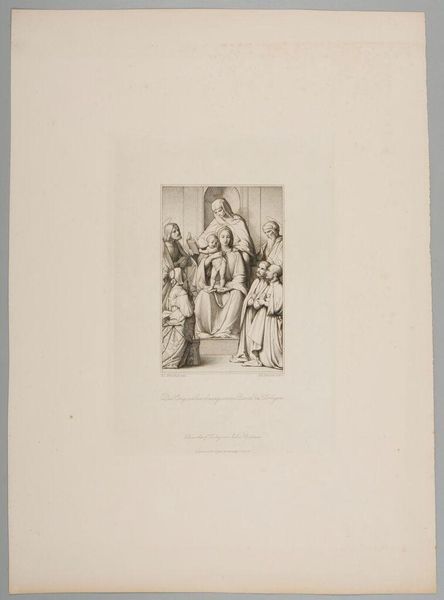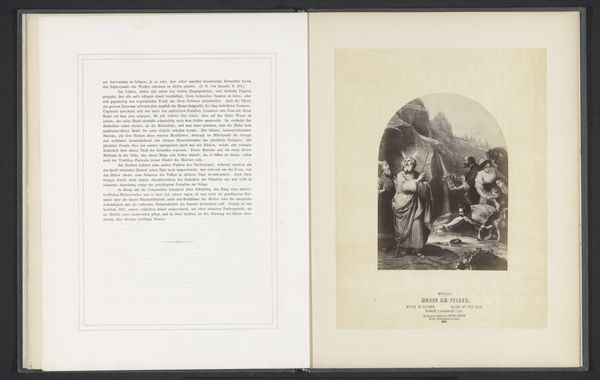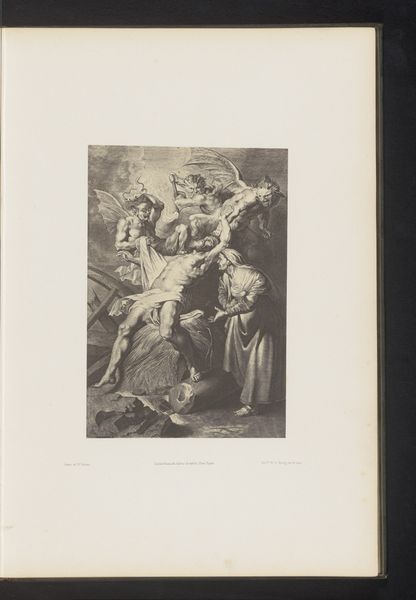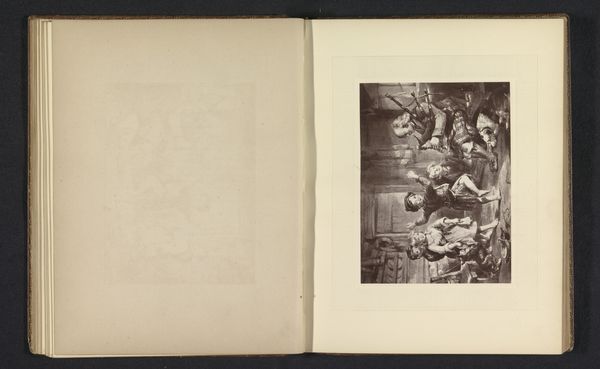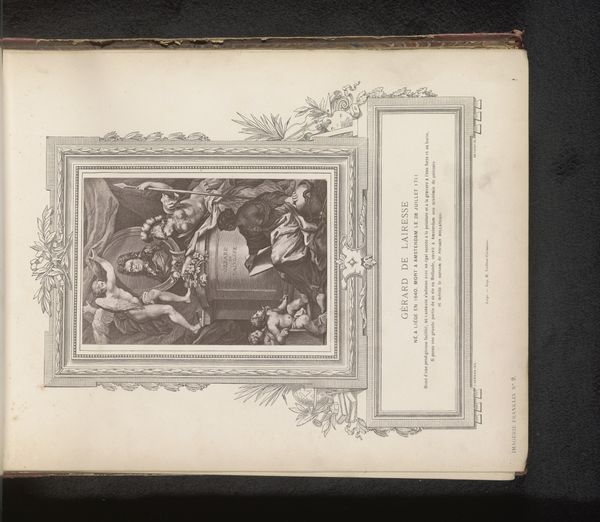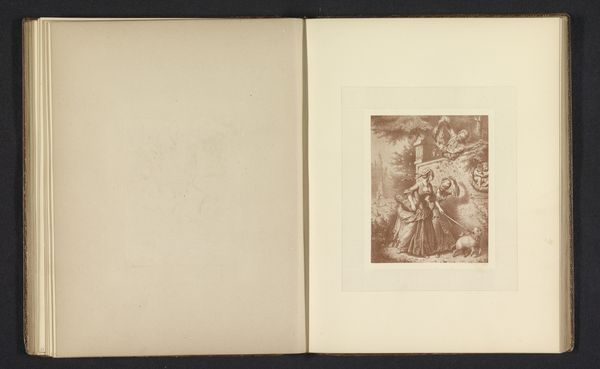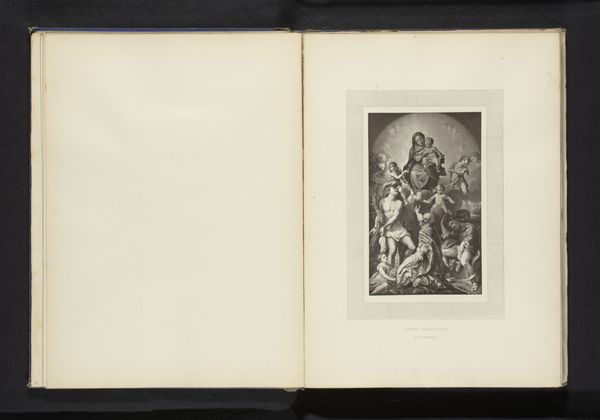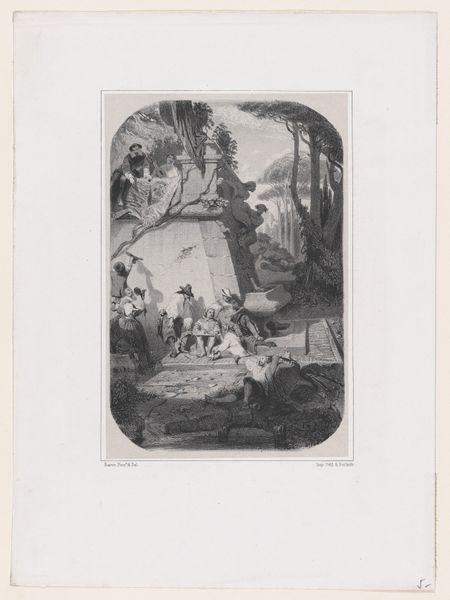
drawing, print, engraving
#
drawing
#
narrative-art
# print
#
pencil drawing
#
men
#
history-painting
#
academic-art
#
engraving
Dimensions: Overall: 9 7/8 x 7 3/8 in. (25.1 x 18.7 cm) Sight: 4 x 3 5/8 in. (10.2 x 9.2 cm)
Copyright: Public Domain
Editor: Here we have "The Wept of the Wish-Ton-Wish," a drawing and engraving by Felix Octavius Carr Darley, made sometime between 1822 and 1888. It's a dramatic scene! What strikes me is the detailed rendering – what can you tell me about this work? Curator: This print presents a compelling entry point to understanding the means of production and consumption of historical narratives in the 19th century. Darley's skilled draftsmanship, evident in the delicate cross-hatching of the engraving, allowed this imagery to be mass-produced, disseminated, and consumed by a wide audience. Editor: So, you're focusing on how it was made and spread? Curator: Precisely. Consider the economic realities – the engraver's labor, the paper production, the printing process itself. What message was being sent by creating something intended for broad distribution, yet depicting, well, *this* particular story? And for whom? Editor: It is a history painting, so I guess it’s for people interested in the past... It almost looks staged, though, too theatrical. Curator: Yes, the narrative being consumed and the way the scene is represented… Notice how the theatrical gestures amplify the sentiment. Can we consider how that affects our engagement? It invites us to contemplate the commercial motivations behind historical narratives, blurring the lines between high art and popular entertainment. Editor: So it’s not just about *what* is shown but *how* and *why* it was shown in this way? Curator: Exactly! Understanding the materiality of the print – its purpose, production and dissemination helps us to decode its cultural meaning and appreciate its complexity. We can examine consumption of art as a type of commodity and its link to socioeconomic value in historical art making and distribution! Editor: That gives me a lot to think about regarding Darley's choice of subject and how the print's production influenced its reception. I hadn’t really considered how material conditions affect art making like this!
Comments
No comments
Be the first to comment and join the conversation on the ultimate creative platform.
